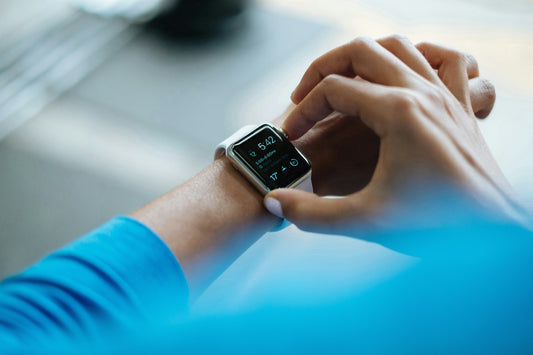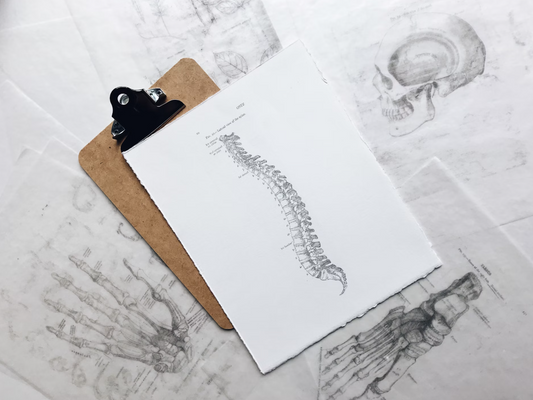In recent years, technology has revolutionized healthcare in ways that were once unimaginable. From telemedicine to health-tracking apps, innovations continue to shape the way we monitor and improve our well-being. One of the most exciting breakthroughs in the realm of respiratory health is the development of wearable devices designed to track and optimize breathing patterns. These devices are offering a new frontier in lung care, enabling individuals to take control of their respiratory health like never before.
But how exactly do these wearable devices work, and what impact do they have on respiratory health? In this article, we’ll explore how wearables are transforming lung care and why they represent the future of respiratory wellness.
The Need for Better Respiratory Health Monitoring
Respiratory health is something many people take for granted until it starts to decline. Conditions like asthma, chronic obstructive pulmonary disease (COPD), and even seasonal allergies can make breathing more difficult, affecting quality of life. For others, poor posture, stress, and lifestyle factors can lead to shallow or inefficient breathing patterns. Unfortunately, most people don’t realize they’re breathing incorrectly or aren’t aware of their lung health until symptoms arise.
Monitoring lung health traditionally involves medical tests that can be invasive or only available during scheduled doctor visits. However, wearable devices are now making it easier for individuals to track their breathing patterns, detect early warning signs of respiratory issues, and optimize their lung function in real time.
How Wearable Devices Monitor Breathing
Wearable respiratory devices are designed to be worn throughout the day, allowing continuous monitoring of key respiratory metrics. These devices typically track things like:
- Breathing rate: How quickly you inhale and exhale, which can provide insights into stress levels, lung efficiency, and overall health.
- Breath depth: The volume of air being inhaled with each breath, which can be an indicator of lung capacity and breathing effectiveness.
- Oxygen saturation (SpO2): This measures the amount of oxygen in your blood, a crucial indicator of respiratory health.
- Heart rate variability: Some devices also monitor heart rate patterns, as breathing can significantly affect cardiovascular health.
- Posture: Many devices now also track posture, since alignment plays a key role in effective lung function.
By collecting and analyzing this data, wearable devices can offer real-time insights into your breathing habits and alert you to potential issues before they become more serious. This constant monitoring provides a proactive approach to lung health that wasn’t possible before.
Personalizing Lung Care with Data
One of the biggest advantages of wearable respiratory devices is their ability to personalize care. In the past, monitoring lung health often meant generalized advice and one-size-fits-all treatments. But with continuous data collection, wearables can give you a detailed picture of how your body is functioning in real-time.
For instance, if a wearable device detects irregular breathing patterns or a decrease in oxygen levels, it can provide actionable recommendations for improving your lung function. This could include specific breathing exercises, reminders to take deep breaths throughout the day, or advice on lifestyle changes like posture correction or environmental adjustments.
For individuals living with chronic conditions like asthma or COPD, this real-time feedback is especially valuable. Instead of waiting for symptoms to flare up or having to schedule doctor appointments, patients can monitor their condition and manage it on their own terms. This empowerment leads to better outcomes and greater overall control over one’s respiratory health.
Training and Retraining Breathing Patterns
Another major benefit of wearable devices is their ability to help individuals train or retrain their breathing patterns. Poor breathing habits, such as shallow or rapid breathing, can exacerbate respiratory conditions and lead to increased stress. Wearable devices can guide users to improve their breathing by offering feedback and reminders for specific techniques.
For example, some devices offer breathing exercises aimed at strengthening the diaphragm, increasing lung capacity, or reducing anxiety. Others provide real-time feedback on breath depth and rate, helping users consciously regulate their breathing. Over time, these habits can become ingrained, leading to more effective and efficient breathing patterns that support long-term lung health.
Supporting Wellness Beyond Respiratory Conditions
While wearables are particularly beneficial for those with chronic respiratory issues, they can also be valuable for individuals looking to optimize their lung health in general. Whether you're an athlete aiming to improve endurance or someone looking to reduce stress, these devices can offer powerful insights into how your breathing affects your overall health.
For athletes, optimizing breathing patterns is essential for peak performance. Wearables can track how effectively an athlete is breathing during exercise and provide feedback on how to improve oxygen delivery to muscles, enhance stamina, and recover faster. This targeted approach can give athletes a competitive edge by maximizing their lung efficiency.
On the other hand, for those dealing with stress or anxiety, wearable devices can help regulate breathing during tense moments. By practicing mindful breathing techniques, individuals can reduce the physiological effects of stress, lower heart rates, and activate the body’s natural relaxation response. Over time, this can improve emotional resilience and overall well-being.
The Future of Respiratory Health
As wearable devices become more sophisticated, the potential to transform respiratory care grows. Future innovations could bring even more precise data, such as real-time analysis of how environmental factors (like pollution or pollen) impact lung health. Additionally, with advancements in AI and machine learning, these devices could become even more intelligent, offering highly personalized health recommendations based on trends in an individual’s data.
Moreover, these devices could play a crucial role in the management of global respiratory challenges, such as pollution-related lung diseases or respiratory health monitoring during air travel. The integration of wearables into public health initiatives could provide real-time data on respiratory trends, helping medical professionals make more informed decisions and respond faster to emerging health crises.
Conclusion: A New Era in Lung Health
Wearable devices are marking the beginning of a new era in respiratory health. These technologies provide individuals with real-time insights into their breathing patterns and offer a proactive approach to lung care. By empowering users to monitor their respiratory health, improve breathing habits, and make informed decisions about their wellness, wearables are transforming the way we care for our lungs.
Whether you're managing a chronic condition, optimizing athletic performance, or simply looking to improve overall lung function, a wearable device can be a valuable tool in your respiratory health journey. As technology continues to evolve, the future looks bright for personalized, data-driven respiratory care that puts control back in the hands of individuals.




